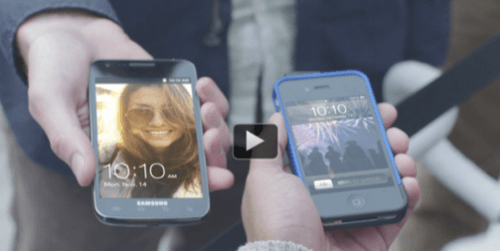The big trend that many of you will find on several top ten lists this month, but not on mine, is Bring Your Own Device (BYOD). The reason it is omitted is because this isn’t news, at least to me. Ever since PCs first started entering corporations in the early 1980s, IT managers have had to contend with users bringing in their own gear. Some analysts call this the consumerization of IT, which still is just a new name for an old trend.

Granted, the number of devices has increased, thanks to lower prices, slashed IT budgets, and better networking and Internet access to corporate data. But it isn’t news, and it shouldn’t be called a trend.
Ted Schadler of Forrester has written a report last week on this subject. He says that BYOD means first and foremost that users want the freedom to choose between iPhone and Android phones for their apps. Fair enough. And as IT budgets shrink, people are gonna buy their own stuff, whether IT says they are going to support it or not. Schadler says more than half of us are already paying for our own phones and monthly cell plans, and 77% of us pick which phones we want to use.
I was talking to an old friend of mine who has been writing about tech for decades like myself, and was reminded how back in the early days of end-user computing in IT (the middle 1980s), we had corporate “standard” apps: things like Lotus 1-2-3 spreadsheets (now extinct and replaced by Microsoft Office), Wordstar and Multimate (ditto), and Ashton-Tate’s dBase (now extinct and replaced by SQL Server and Oracle). We toiled mightily to convince our end users that these were the only apps worthy of running on our corporate PCs, and that if they wanted to use something else, we couldn’t support it.
Those days seem so quaint now. Back in 1993, I wrote in now-defunct Communications Week magazine: “For years corporate support departments have urged their users to purchase the application first, then platform and operating system second. It seems as finally these notions have been accepted with a vengeance, with the result that networks are inevitably multi-client.”
Schadler says,” in a world where employees pick their own phone for work and home, the app store matters.” True. But no one buys phones or tablets based on the app store listing. This would seem to agree with my 1993 sentiments. But we are both wrong. No one purchases phones or tablets in this way. As a point of reference, check out this commercial from Samsung which pokes fun of the folks waiting on line (presumably in front of an Apple store). It shows that waiting for the latest iPhone can be silly, especially while walking by on the sidewalk are Samsung owners who already have their fancy 4G smartphones. Too bad Samsung doesn’t have the Apple mystique. “I’m creative,” says one of the hipster types waiting in line. “Dude, you are a barista.” Touche.

But back to BYOD. This isn’t just about Compaq vs. IBM PCs, as I had to deal with back in the day. Or Windows vs. Mac OS. It is about supporting everything, like it or not. And doing so on puny IT budgets too.
(BTW, our opening image is from the cartoon CHIEF & CHUCK that we ran in early November on this topic.)










